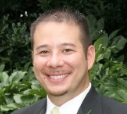Sometimes I get requests from Association Managers or HOA boards that indicate there is still some misconception concerning what specifically is included in a reserve study. In helping to clarify what a reserve study is and what it is for, it would be useful to explain what a reserve study should not include.
Any expense that occurs annually, no matter how large should be part of the home owner’s association’s annual budget, NOT a reserve study. For example, if a condo community paints one of its buildings every year this expense should be included in the annual budget. By the way, paint is a nebulous category due to some obscure IRS rules, and how an association files its tax returns, but we’ll discuss that in a future post… I promise.
Small expenses that occur periodically are usually funded through the annual budget, NOT a reserve study.. What’s a small expense? It depends on the community. The threshold between the annual budget and reserve budget for a townhouse community maybe 300, it could be 3,000. Typically, I try to include smaller items on the report, but will leave them unfunded. If the home owner’s association feels differently after reviewing the reserve study, I can always include funding for these items. A good example is light fixtures or interior doors. I just performed a study for an 11 story condo tower at Wrightsville Beach. They have a full time maintenance man on staff. When required, he paints all the hallways and this is paid through the HOA’s annual budget.
A Reserve Study does NOT include Acts of God. A reserve study accounts for predictable future costs. I don’t own a crystal ball. A bartender serves somebody one drink too many, and next thing you know you have a car where your monument used to be. You won’t see that in a reserve study. That’s where the HOA’s insurance comes in.

